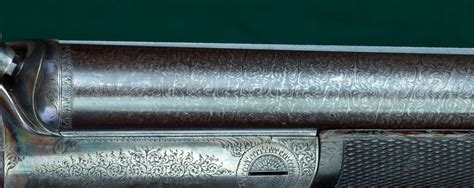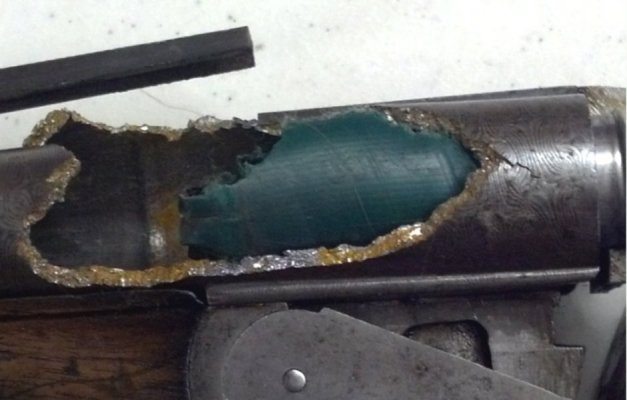Damascus Barrel
Damascus barrels are older model shotgun barrels created mainly in Belgium and England during the late 19th century.
Look But Don't Shoot
The term Damascus Steel refers more to sword making, and when discussing firearms a Damascus Barrel mostly refers to a type of shotgun barrel. Damascus-barreled shotguns, also called twist barrel shotguns are considered inferior to those made with all steel. Damascus barrels are made by using wrought iron or steel (called skelp) wrap rolled into narrow strips of tubing or piping. It is true that this method of forging shotgun barrels is very outdated and considered to be inferior quality, and also very dangerous to discharge with modern ammunition.
Damascus, a general term describing the combination of steel and iron, was first used for edged weapons as early as the third century. As swords and knives were sold in volume in Damascus, the unique metal carried the name. Some 400 years ago Damascus barrels were being made in Eastern and Near-eastern countries. Trade brought them to Europe in the mid-1790s. A Frenchman, Jean- Francois Clouet of Liege, was among the first Western gunmakers to experiment with Damascus barrels. The forging of a Damascus method gun barrel used this skelp, wrapped around a mandrel and created spiral that were then hammered to form a tube. Because of the rolling & twisting of steel in the forging process, Damascus barrels are often called "twist barrels".
The English improved the process making a stronger Damascus barrel. They used a process of turning a bevel-edged band of metal into a spiral-twist with interlocking threads. To make these barrels, iron and steel plates were stacked one on top of each other, heated and hammered to create one block of mixed metal. That block was then heated and drawn to form a rod. Once six rods were complete, they were twisted with half facing opposite then combined with a thin metal sleeve and finished off with a process involving heat welding.
European gunmakers continued using Damascus shotgun barrels well into the first quarter of the 20th Century. These barrels were inadequate to handle the pressures of the new smokeless gunpowder. Americans were ahead of the game, moving away from Damascus barrels and on to tubes made from fluid steel. Around the 1880s.
For the modern collector it is often advised against using modern shotgun ammunition in antique shotguns with Damascus barrels. There are exceptions to this as it is known that some of the shotguns of Damascus forging are of sufficient quality to fire modern ammunition. Firearms manufactured by lesser-known companies tend to be of inferior Damascus manufacturing quality. These lesser known gunmakers used lower-quality metals and sub-par construction that, when combined with modern ammunition, causes some barrels to burst. Even if the shotgun is made by a known manufacturer it is advised that low-compression shells are used and that the condition of the antique is adequate.
If is necessary to consider the size of the shotgun shell as well as the pressure generated from the charge when using modern ammunition in an antique shotgun. Modern shotgun shells are often too long and the crimp extends beyond the chamber’s length. The discharge pressures must be contained within the chamber, therefore it is recommended to use shorter shells that are low-compression like those from RST Shotshells and Polywad to name a couple.
The Damascus barrel has a beauty of its own. The twisting patters visible in the metal can be very pleasing and make excellent display antiques. The lighter color of the steel against the dark iron, combined with the twists, gave the barrels some interesting patterns. The traditional final finish for Damascus barrels is for them to be browned by a process of controlled rusting. Some of the chemicals used for the browning process varied from one maker to another, however among some of them the combination emphasized the pattern of the twists as some chemicals attacked the iron but not the steel.
Many gun experts still strongly advise against using modern ammunition in a shotgun with a Damascus barrel or barrels without regards to the quality and condition of the antique. Do so at your own risk.


